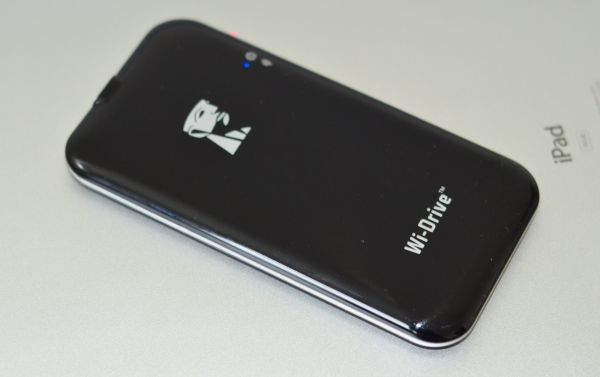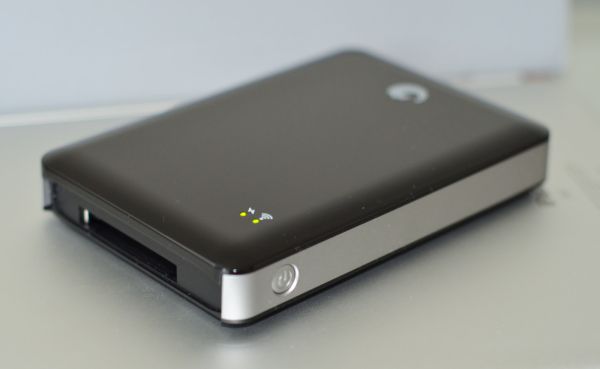Understanding Wireless Storage: Kingston Wi-Drive and Seagate GoFlex Satellite
by Vivek Gowri on November 21, 2011 2:30 PM ESTConclusion
Let’s start with the devices themselves. I’m a huge fan of Kingston’s Wi-Drive design—it’s sleek, elegant, and has everything you’d want in a simple wireless flash drive for iOS devices. But at the same time, it’s impossible to discount the fact that the GoFlex Satellite is a significantly more versatile device, given its capability to stream to different platforms and anything with a web browser. Plus, you get roughly fifteen times more storage capacity compared to the largest Wi-Drive Kingston has on offer.
The GoFlex Satellite, in my mind, is the ultimate roadtrip companion. You get 500GB worth of movie storage space, there’s no issues with the wireless connections (either being barred from using wireless radios on an airplane or having an internet connection that you can’t use), and it conveniently comes with a compact car charger in the box. If you’re going to be driving more than 1000 miles anytime soon, you will definitely appreciate having one of these on hand. However, I suspect that the 1000+ mile roadtrip with an iPad market is pretty limited.
The GoFlex Satellite makes more sense to me as a portable media solution than the Wi-Drive, because you can fit a decent chunk of even a very large media library onto a 500GB drive, whereas the Wi-Drive is more of a companion piece to carry a few documents, pictures, and movies. Even by that standard though, the Satellite is on the pricey side—you can find standard 500GB GoFlex portable drives for sub-$70, putting them at roughly 40% the price of the Satellite. Is the convenience of wireless file access worth paying nearly three times as much? Not for most people, but if you’re in the niche that needs it, the Satellite is a solid choice.
Honestly, I liked the Wi-Drive better. It’s a sleek, well designed, well integrated piece of technology that I greatly enjoyed using. It’s better looking, more portable, and more usable than the Seagate. The option to still connect to the internet, slower as it might be due to the increased network latency, is a rather useful feature that you don’t get with the Satellite (though the need to disable security in the present firmware to get this working needs to be addressed). The Wi-Drive launched at $179 for the 32GB and $129 for the 16GB, prices that happen to fall slightly above Apple’s pricing hierarchy. Apple asks for $100 to go from 16GB to 32GB, and $200 to go from 16GB to 64GB, so on the one hand it's a reasonable idea to survive with a limited amount of storage and put the money towards a higher capacity future-generation iDevice. On the other hand, having built-in storage with faster access and better battery life without the need to carry an extra device isn't without merit.

With the new street prices of $79 and $99 for the 16GB and 32GB models, respectively, it’s a much easier sell, especially for the 32GB model. The value question is simple—you’re undercutting Apple’s own steps between storage capacity rather significantly, so it’s not a senseless financial proposition. As such, it’s not a bad idea to pick up a Wi-Drive as a cool way to expand storage on your mobile device and wow your friends in the process, but going through a separate wireless network and having a wireless passthrough to get internet is a hassle, one that needs to be fixed in future generations.
It’s always difficult to provide a clear conclusion on devices in a completely new category, for a multitude of reasons. Early devices tend to be expensive and functionally limited, but the underlying concept has the potential to go much farther. That basically sums up my feelings for wireless storage at this point: I don’t personally see either of the two devices here as game changers; the Wi-Drive is an interesting toy to pick up given the price drop, but that’s about it.
With that said, I think wireless storage is going to play a big role in the move to cloud-based applications and data, moving storage away from devices and turning them into thin-clients for cloud services. Portable wireless storage is one component for when you have local content to access. It adds another dimension of versatility and portability to the data you store, and it has the potential to become the wireless replacement for flash drives and the like. However, the current solutions, including the Kingston and Seagate we looked at, give up too much of the convenience factor to be worth the hassle unless you really, really need to extend the storage of your mobile device right now.











32 Comments
View All Comments
sallenmd - Thursday, December 8, 2011 - link
They should be happy with the >3 hours of streaming on one charge. Mine gives out after 45 minutes streaming audio to a single iPadmillerm - Tuesday, March 25, 2014 - link
Did you guys happen to note the file system information about the file system that is actually used on the Wi-Drive. I have been trying to replace the usb stick and need to try and get the filesystem formatted in the correct way.